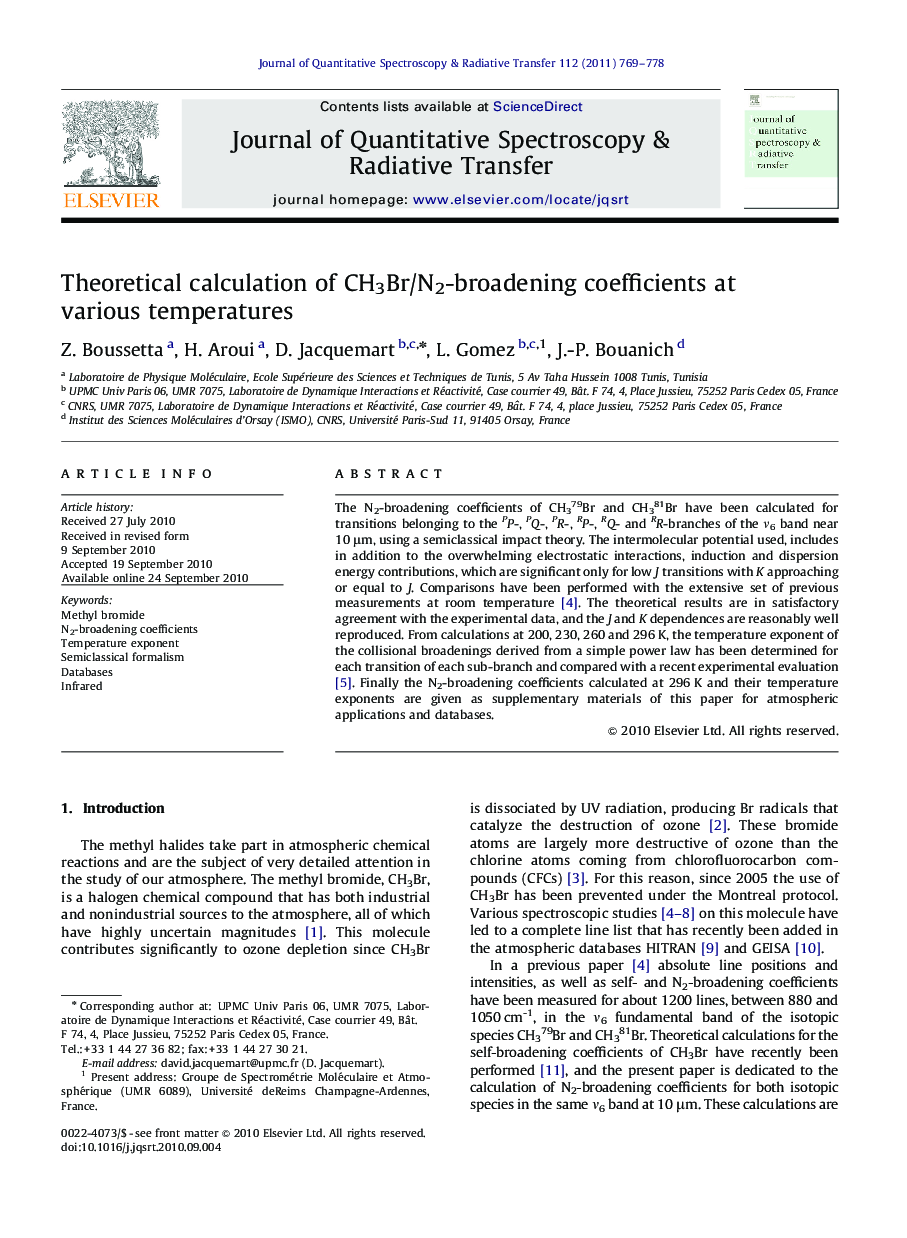| Article ID | Journal | Published Year | Pages | File Type |
|---|---|---|---|---|
| 5429658 | Journal of Quantitative Spectroscopy and Radiative Transfer | 2011 | 10 Pages |
The N2-broadening coefficients of CH379Br and CH381Br have been calculated for transitions belonging to the PP-, PQ-, PR-, RP-, RQ- and RR-branches of the ν6 band near 10 μm, using a semiclassical impact theory. The intermolecular potential used, includes in addition to the overwhelming electrostatic interactions, induction and dispersion energy contributions, which are significant only for low J transitions with K approaching or equal to J. Comparisons have been performed with the extensive set of previous measurements at room temperature [4]. The theoretical results are in satisfactory agreement with the experimental data, and the J and K dependences are reasonably well reproduced. From calculations at 200, 230, 260 and 296 K, the temperature exponent of the collisional broadenings derived from a simple power law has been determined for each transition of each sub-branch and compared with a recent experimental evaluation [5]. Finally the N2-broadening coefficients calculated at 296 K and their temperature exponents are given as supplementary materials of this paper for atmospheric applications and databases.
Research Highlights⺠CH3Br/N2-broadening coefficients have been calculated at various temperatures. ⺠Semiclassical Anderson-Tsao-Curnutte (ATC) theory. ⺠Temperature dependence has been determined through temperature exponents. ⺠Comparisons have been performed and led to a relative good consistency. ⺠A complete list of the calculated N2-broadening and temperature exponents is given
